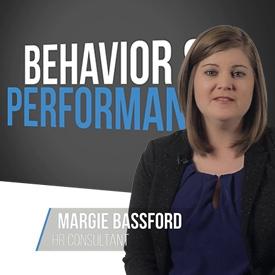- Beneficios para empleados
- Artículo
- Lectura de 6 minutos
- Last Updated: 12/24/2024
Is a Safe Harbor 401(k) Right for You?

Table of Contents
Offering a retirement savings plan for your employees is an attractive and desirable benefit because it helps them build financial security for their future. Any company that provides a 401(k) retirement plan needs to be aware of mandatory government compliance tests that ensure a company's plan does not discriminate in favor of highly compensated or key employees. A safe harbor 401(k) is a solution that allows business owners to avoid this annual test and its related, time-consuming hassles. Use the following information to determine if a safe harbor 401(k) is right for you.
What Is a Safe Harbor?
As the name implies, the general meaning of "safe harbor" refers to a provision in a law that says certain conduct will be considered as non-violation of a particular rule or requirement. Applied to 401(k) plans, the safe harbor 401(k) plan exempt an employer from annual nondiscrimination testing that is required with a traditional 401(k) plan if the employer provides, among other things, contributions to employees' accounts that are fully vested when made. According to the Internal Revenue Service (IRS) the safe harbor contribution can be either employer-matching contributions (limited to employees who defer) or contributions made on behalf of all eligible employees, regardless of whether they make elective deferrals.
What Is the Benefit of Safe Harbor 401(k)?
When a company makes the necessary mandatory contributions to 401(k) plan participants, all employees including the business owners, have something to gain. A 401(k) plan is not only a solid way to attract and retain top talent, but a safe harbor 401(k) may help you avoid potential fees associated with managing a traditional retirement plan.
Safe Harbor Match Types
There are three Safe Harbor matches, each structuring their mandated employer contribution differently. Your business might need help understanding the complexities and requirements of these different contributions:
Pooled Employer Plan
| Basic Match Auto-Enrollment (2-year or Immediate Vesting) | Basic Match No Auto-Enrollment (Immediate Vesting) | Enhanced Match Auto-Enrollment (2 year or Immediate Vesting) | 4% Enhanced Match No Auto-Enrollment (Immediate Vesting) | Non-Elective Contribution (NEC) | ||||
|---|---|---|---|---|---|---|---|---|
| Employee | Employer | Employee | Employer | Employee | Employer | Employee | Employer | 3% |
| 1% | 1% | 1% | 1% | 1% | 1% | 1% | 1% | All eligible EEs receive 3%, including those who do not contribute via salary deferrals |
| 2% | 1.5% | 2% | 2% | 2% | 2% | 2% | 2% | |
| 3% | 2% | 3% | 3% | 3% | 3% | 3% | 3% | |
| 4% | 2.5% | 4% | 3.5% | 4% | 4% | |||
| 5% | 3% | 5% | 4% | |||||
| 6% | 3.5% | |||||||
Single Employer Plan
| QACA 3.5% Auto-Enrollment (2-year or Immediate Vesting) | 4% Standard Safe Harbor Match | 4% Enhanced Safe Harbor Match | Non-Elective Contribution (NEC) | |||
|---|---|---|---|---|---|---|
| Employee | Employer | Employee | Employer | Employee | Employer | 3% |
| 1% | 1% | 1% | 1% | 1% | 1% | All eligible EEs receive 3%, including those who do not contribute via salary deferrals |
| 2% | 1.5% | 2% | 2% | 2% | 2% | |
| 3% | 2% | 3% | 3% | 3% | 3% | |
| 4% | 2.5% | 4% | 3.55 | 4% | 4% | |
| 5% | 3% | 5% | 4% | |||
| 6% | 3.5% | |||||
401(k) Nondiscrimination Testing
The federal government doesn't want a 401(k) plan to "discriminate" against lower-paid employees who can't contribute as much as highly compensated employees (HCEs). With this in mind, compliance testing is leveraged to look at how much income employees defer and what percentage of assets in the plan belong to the HCEs and/or highly paid key employees, such as the owners. To pass nondiscrimination testing, the deferred contributions of HCEs and key employees must not greatly exceed those of lower-paid employees.
Annual tests compare the actual deferral percentage (ADP) and the actual contribution percentage (ACP) made by HCEs to their retirement accounts to the deferrals and contributions made by rank-and-file employees. The IRS defines an HCE as an individual who owned more than 5% of the interest in the business at any time during the year or preceding year, regardless of compensation or received compensation from the business of more than $160,000 ($155,000 if the preceding year is 2024). The top-heavy test, another type of annual nondiscrimination test, looks at what percentage of the plan's present value belongs to key employees. No more than 60% of assets should belong to those employees.
What if a Plan Fails?
If a business fails 401(k) compliance testing, two corrective options are available. The first option is to refund some of the contributions made by the HCEs through what's called corrective distributions. Those refunded amounts would then become taxable to those employees. The company would also face a 10% excise tax if they do not make refunds by the annual deadline. The second option is to fund a Qualified Non-Elective Contribution (QNEC) to the non-highly compensated employees in the amounts needed to pass the test. An employer usually has 12 months to make corrections.
The IRS provides opportunities to address mistakes under a Self-Correction Program (SCP), a Voluntary Correction Program (VCP), or Audit Closing Agreement Program (Audit CAP). All three are subject to specific rules and regulations. The latter two have fees associated with them. Details can be found on the IRS website.
How Common Is It To Fail?
Often, businesses fail compliance testing because they lack an understanding of the rules. Partnering with a third-party retirement plan administrator on 401(k) plan design as well as receiving testing status updates are ways to improve the likelihood of successfully passing nondiscrimination testing.
Small businesses are especially prone to failing because owners often want to contribute a large sum of their personal income to the tax-deferred retirement plan, and they may not have enough non-HCEs making contributions to meet the nondiscrimination testing requirements.
What Is a Safe Harbor Plan Design?
Employer-sponsored retirement plans can avoid annual nondiscrimination testing by instituting a safe harbor plan design. The employer safe harbor contribution provides an opportunity for all employees benefit from employer-sponsored retirement plans — not just the highest paid staff members. This can happen in one of two ways:
- A plan sponsor can provide a 100% match to pretax contributions made by non-highly compensated employees on 3% of their pay, plus a 50% match on the next 2% of pay on their contributions.
- A plan sponsor can automatically contribute 3% of pay to the retirement accounts of all non-highly compensated employees, regardless of whether those employees contribute to their accounts.
Is Safe Harbor Plan Design the Only Way To Avoid Nondiscrimination Rules?
It's not the only way, but it's often the easiest. Encouraging all employees to participate in and contribute to their retirement plan can increase the odds that a plan will pass nondiscrimination testing. This takes effort and strategy because there are numerous reasons why employees don't participate in their 401(k) plan. That said, one way to increase participation is through automatic contributions, which means employee contributions are automatically deducted from their paycheck unless they opt out. The more non-highly compensated employees participate, the less of an issue it will be for HCEs who want to contribute more.
Is a Safe Harbor Plan Right for My Business?
Deciding if a safe harbor plan makes sense for your business depends on your company and how much incentive you want to give employees to join your company, continue their service, and help them strengthen their financial wellness through retirement contributions.
Many 401(k) plans are designed for small businesses under 10 employees. A safe harbor 401(k) may be a good fit depending on your business requirements, employee pool, capacity to match contributions, and ability to undergo compliance testing. Advantages include:
- Tax benefits that can help offset the cost of plan administration.
- A tool to help attract and retain quality employees.
- High contribution limits: up to $23,500 of salary, tax deferred.
- Enabling of profit-sharing.
- Tax credits to eligible employers of up to $16,500 ($5,500 per year for three years that includes $500 per year for implementing auto-enrollment in your plan).
Mandatory Contributions
A safe harbor (401(k) plan requires the company to make mandatory contributions to the plan participants through a match or non-elective contribution. Those contributions benefit the employees, the company, and the business owner. Consider the following:
- Most testing requirements are automatically satisfied, thus eliminating the need for annual nondiscrimination testing.
- Business owners and HCEs have greater ability to maximize salary deferrals.
- Employer contributions encourage employee participation in the plan. This can ultimately lead to greater financial wellness for employees, as well as improving their overall satisfaction with the business.
Traditional 401(k) vs. Safe Harbor 401(k)
Use the following chart to compare a traditional 401(k) with the 401(k) safe harbor.
|
Feature |
Traditional 401(k) and Owner Only |
401(k) Safe Harbor |
|
Maximum Employee Deferral |
$23,500* |
$23,500* |
|
Roth Contribution |
Yes, within deferral limit |
Yes, within deferral limit |
|
Catch-up Contributions (for participants 50 or older) |
$7,500* |
$7,500* |
|
Catch-up Contributions (for participants ages 60-63) |
$11,250 |
$11,250 |
|
Employer Contribution |
Employer option |
Matching contribution of 100%, up to 3% of compensation, and 50% of the next 2%, OR Non-elective contribution of 3% of compensation to all eligible participants |
|
Vesting |
Options available |
Immediate (Safe harbor contributions) Options available (Other contributions) |
|
Loans |
Yes |
Yes |
|
ADP/ACP Testing |
Yes |
No |
|
Top-Heavy Testing |
Yes |
Generally satisfied |
|
Investment Providers |
Choice of many |
Choice of many |
|
Compatible with Profit Sharing Plans |
Yes |
Yes |
*Limit indexed annually by the IRS.
When should you change your traditional plan to include safe harbor provisions?
If you already offer a traditional plan and answer yes to any of the following questions, you may benefit from the safe harbor provision:
- Has your plan failed compliance testing, resulting in returns of excess contributions or mandatory corrective employer contributions?
- Are you or your HCEs limited in how much they can contribute?
- Do you already offer an employer match?
- Do you have a company with 25 employees or fewer?
Deadline for Starting a Safe Harbor Plan
Before the Setting Every Community Up for Retirement Enhancement Act (SECURE Act), the IRS was strict with its October 1 deadlines. The SECURE Act, adopted on Dec. 20, 2019, eliminated the notice requirement for nonelective safe harbor plans. Employers are allowed to switch to a safe harbor 401(k) plan with nonelective contributions prior to 30 days before the end of the plan year.
Establishing a 401(k) is replete with benefits for employers and employees. A third-party retirement plan administrator can maximize the financial and ancillary gains that are available with a traditional 401(k) and safe harbor plan.
Tags








